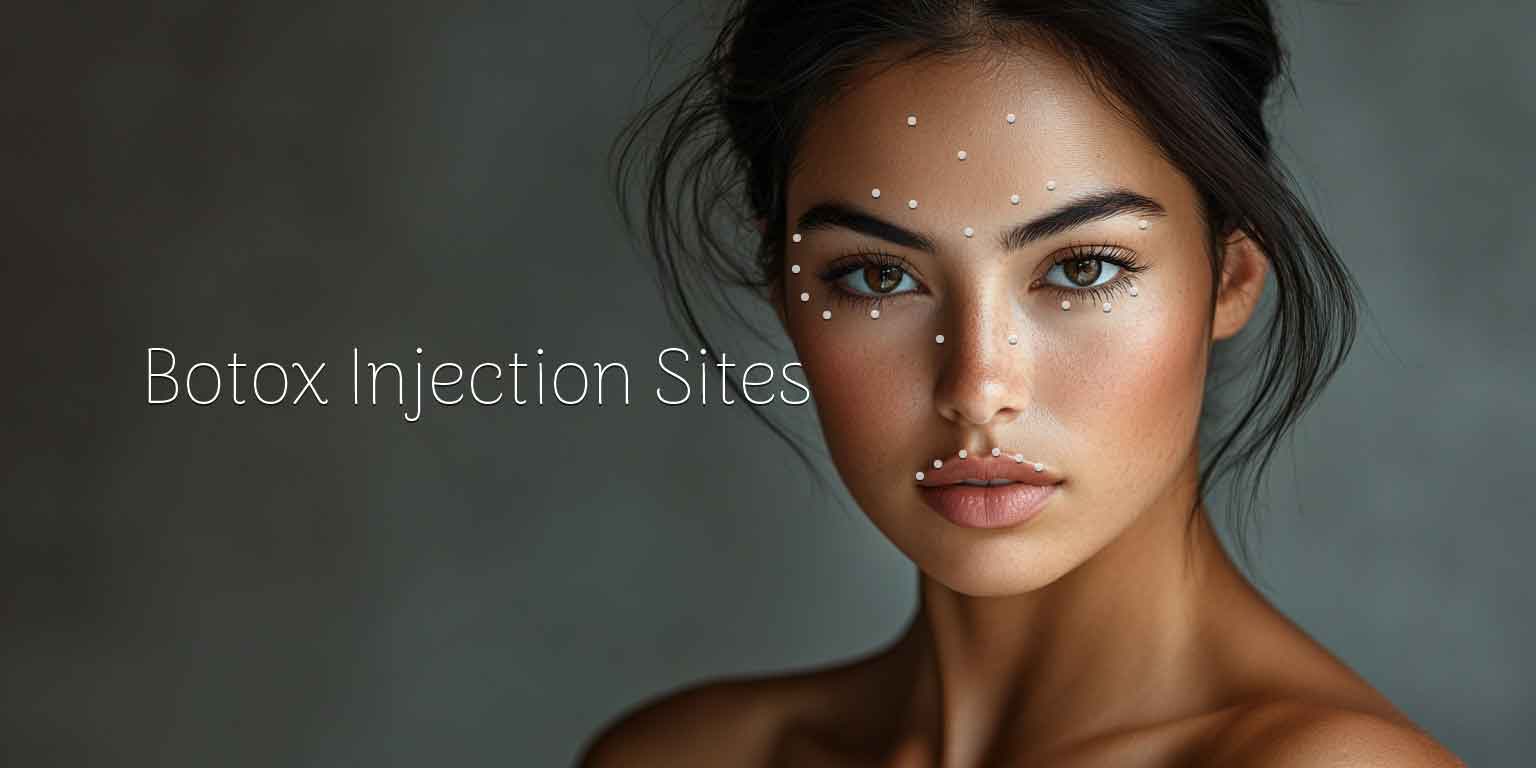Where to Inject Botox®
By Dr. Stephen Cosentino
PRESIDENT OF EMPIRE MEDICAL TRAINING
Neurotoxins | March 10, 2021

Where to Inject Botox®
Entry made by
Empire Medical Training
The U.S. Food and Drug Administration and other national and regional health authorities have approved Botox® and similar medications derived from the botulinum A toxin to treat more than a dozen cosmetic and pre-existing musculoskeletal
conditions, from fine lines to jaw clenching.
These conditions present not just in the face and head but in the
underarms, the lower abdomen, even the soles of the feet. This makes it vitally important for clinicians to know how FDA-approved Botox works, where to inject Botox safely and effectively, and what the effects of Botox are.
Such Botox training is best obtained through a credentialed continuing medical education program
taught by board certified dermatologists. Before enrolling, providers who wish to gain context around Botox injection protocols can review this comprehensive guide on where to inject Botox. Read on for an overview of what to
expect from this material and a roundup of the most common sites on the body where Botox may be injected safely for both anti-aging and medical purposes.
What to Expect From This Guide on Where to Inject Botox
These are the most common cosmetic issues that facial Botox treatments can temporarily correct:
- Where to inject Botox (a list of the most common treatment areas where Botox may be injected)
- Where not to inject Botox
- How to identify the correct injection points for Botox on the part of face or body of each patient
- How to determine whether a patient is a good candidate for Botox
- Post-injection monitoring possible side effects and complications Each issue corresponds to a specific area or zone of the face.
Common Injection Sites and Dosing
These are among the most common regions of the body and facial muscles where Botox can be injected, along with general dosing guidelines for each:
-
The forehead. Forehead Botox injections are indicated for the treatment of forehead lines (typically 5 to 25 units) and chronic migraine (typically 20 to 30 units).
-
The area between the eyes (above the bridge of the nose). Injections here are indicated for the treatment of “11” lines, a common cosmetic issue (dosing varies).
-
The corners of the eyes. Injections ranging from 5 to 15 units are indicated for the treatment of crow’s feet.
-
The corners of the mouth. Injections here may treat “smoker’s lines” (frown lines, up to 6 units) and crooked or drooping smile (dosing varies).
-
The masseter muscles. Masseter muscle injections treat involuntary jaw clenching (bruxism, up to or in excess
of 30 units in some cases).
-
The back of the head. Occipital nerve injections may be indicated for the treatment of migraine, depending on the position and origin of associated pain.
-
The underarms and soles of the feet. Botox injections may be effective treatment for hyperhidrosis (excessive sweating) in these areas.
- The bladder. Botox may be an effective temporary treatment for urinary incontinence.

Where Not to Inject Botox
Botox injectors must observe certain broad injection guidelines regardless of patient or procedure. For example:
- Avoid injecting Botox into or near major blood vessels, which may increase the risk of systemic complications
- Avoid injecting Botox beneath target muscles, which may also increase systemic complication risk
- Avoid injecting Botox into nonmuscular tissue near active injection sites, such as the vitreous body
- Avoid injecting Botox into the dermis (upper skin layer) or bunched skin, which may reduce the medication’s efficacy
Clinicians must understand injection procedures for each type of Botox treatment, as the injection process (including site preparation,
injection depth, and dosing) varies. As an example, clinicians injecting Botox into a patient’s lower eyelid must tauten the lower eyelid (using the non-dominant hand to pull back the skin and create a smooth injection field).
Each Botox injection site carries its own set of specific considerations and risks. While it seems easy enough to avoid obvious “no-go” zones like the lips or vitreous body, subtler risks abound. For example, clinicians
injecting Botox into the lower forehead or crow’s feet must avoid injecting too close to the upper orbital bone, where a slight needle misplacement can cause ptosis (eyelid droop), an unsightly complication.
How to Find the Ideal Location for Each Botox Injection
For any given Botox treatment procedure, the ideal location for each injection depends on the condition being treated, the patient’s desired outcomes, and the physiological characteristics of the patient themselves, among other factors. Sample diagrams
showing possible injection site locations should not be considered determinative. Clinicians must thoroughly evaluate each individual patient before mapping out where to inject Botox.
Pre-treatment
injection site mapping should occur only after a determination has been made that the patient is a good candidate for Botox treatment (see below). During pre-treatment evaluation for facial injections, clinicians should refer
to a facial anatomy guide as they ask patients to make facial expressions — to smile, frown, clench, raise the eyebrows, and execute other facial movements. Clinicians may manipulate the patient’s skin with gloved hands as
necessary as well. Once located, clinicians typically mark injection sites with red or black ink.
Determining Whether Candidates Should Proceed With Botox Treatment
Not all prospective patients are suitable candidates for Botox treatment. Mist patients should be excluded from further consideration if they present with any of the following issues:
- An “at risk” condition, such as myasthenia gravis or Lambert-Eaton syndrome, that requires ongoing medical monitoring
- Diabetes (Type 1 or 2), rheumatoid arthritis, congestive heart failure, and certain other serious, chronic underlying health conditions
- A known allergy or sensitivity to any Botox ingredient, including sucrose, albumin, or lactose
- Anatomical defects like marked facial asymmetry or ptosis
- Any known history of facial palsy
- Current or recent skin infection around the planned treatment site
- Current known pregnancy, planned pregnancy, or breastfeeding
- Anticoagulants (warfarin and others)
- Aminoglycoside antibiotics
- Muscle relaxers and certain other classes of drugs that can increase Botox’s potency
- Certain classes of drugs that may reduce Botox’s potency, neutralize the toxin, or interfere with the toxin’s action on the action of the muscles around the treatment site

Clinicians should be cautious when administering Botox treatment to older patients as well. There is no firm age threshold above which treatment is not recommended, but providers should be clear-eyed about the risks and carefully balance elderly patients’ desired outcomes against both the known risks of the treatment in the general population and the higher likelihood of actual medical contraindications in older individuals.

Follow-up and Best Practices for Monitoring Patients for Botox Side Effects
No matter where Botox is injected, side effects and complications may occur. The numeric incidence of any Botox side effects
is quite low and the likelihood of serious complications is lower still, but it is still important for providers to understand these risks and present them to treatment candidates early on.
For Botox treatments administered
to the face and forehead, the most common visible side effects are crooked or lopsided smile and eyelid drooping. Other possible side effects include but are not limited to:
- Swelling or pain at and around the injection site
- Bruising or redness at and around the injection site
- Headache
- Flulike symptoms
- Generalized muscle weakness
- Loss of bladder control
- Trouble speaking or swallowing
- Changes in vision or vision problems


